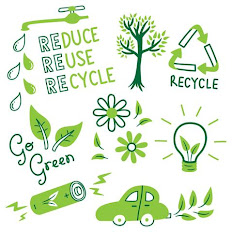Lesson 6.
The earth
Objective: To learn the parts of the Earth and its layers.
Keywords: drought, equator, erosion, ocean, mantle, axis, ozone, rotation, terrain
Vocabulary
|
N° |
English |
Spanish |
|
1 |
Earth |
Tierra |
|
2 |
Sun |
Sol |
|
3 |
Atmosphere |
Atmósfera |
|
4 |
Surface |
Superficie |
|
5 |
Rocky |
Rocoso |
|
6 |
Terrestrial |
Terrestre |
|
7 |
Motion |
Movimiento |
|
8 |
Translation |
Traslación |
|
9 |
Driven by |
Impulsado por |
|
10 |
Rotation |
Rotación |
|
11 |
Determinate |
Determinar |
|
12 |
Length |
Largo |
|
13 |
Solar system |
Sistema solar |
|
14 |
Layers |
Capas |
|
15 |
Made up |
Componer |
|
16 |
Physical |
Físico |
|
17 |
Geosphere |
Geosfera |
|
18 |
Core |
Centro |
|
19 |
Crust |
Corteza |
|
20 |
Innermost |
Interior |
|
21 |
Metals |
Metales |
|
22 |
Thickest |
Más grueso |
|
23 |
Outermost |
Más externo |
|
24 |
Bottom |
Fondo |
|
25 |
Quarters |
Cuarto |
|
26 |
Hydrosphere |
Hidrosfera |
|
27 |
Troposphere, |
Troposfera |
|
28 |
Ozone |
Ozono |
|
29 |
Stratosphere |
Estratosfera |
|
30 |
Mantle |
Manto |
|
31 |
hottest |
Más caliente |
Lesson plan n°6 – English version
Lesson plan n°6 – Spanish version
Let's learn about the earth
Earth is the third planet from the Sun and it is our home; it is the only planet known to have an atmosphere containing free oxygen, oceans of water on its surface and, of course, life. Earth is a rocky and terrestrial planet. It has a solid and active surface.
Earth was formed more than 4.5 billion years ago and has been changing ever
The Earth is in constant motion and has two movements. The first is translation, the
translational motion of the Earth moves around the Sun, driven by gravitation,
in 365 days, 5 hours and 57 minutes.
The second one is rotation, this is the one in which the Earth rotates on itself causes day and night and lasts exactly 24 hours, the same as a day.
These movements determine the length of days and years and it moves with the rest of the planets and bodies of the Solar System, rotating around the center of our galaxy.Now, let’s learn about: The layers of the
Earth
The Earth is made up of three physical elements:
· The geosphere: this is the solid element and is divided into three layers: the core, the
mantle, and the crust
The
core: It is the innermost layer of the
earth. It is made up of metals and its temperature is very high.
The
mantle: It is the
thickest layer in the geosphere and is between the crust and the core.
The
crust: It is the outermost layer of the
geosphere. It is composed of rocks and in it are the continents, islands and
the bottom of the oceans and seas.
·
The hydrosphere: this is the liquid element and it is the set of all
the water that exists on Earth and occupies three quarters of the earth's
surface.
·
The atmosphere: This is the gaseous element and it is the layer of
air that covers the Earth and is made up of a mixture of gases and water vapor.
The atmosphere is divided into two layers.
The troposphere, which
is the closest to the earth.
The stratosphere, which is where the
ozone layer is located and is the layer furthest from the earth.
Since you already know about the earth and its layers it is
already clear, you can carry out the following activities in order to put into
practice what you have learned.
Let's watch the following video
Activity n°1
Complete the sentences with these words.





















